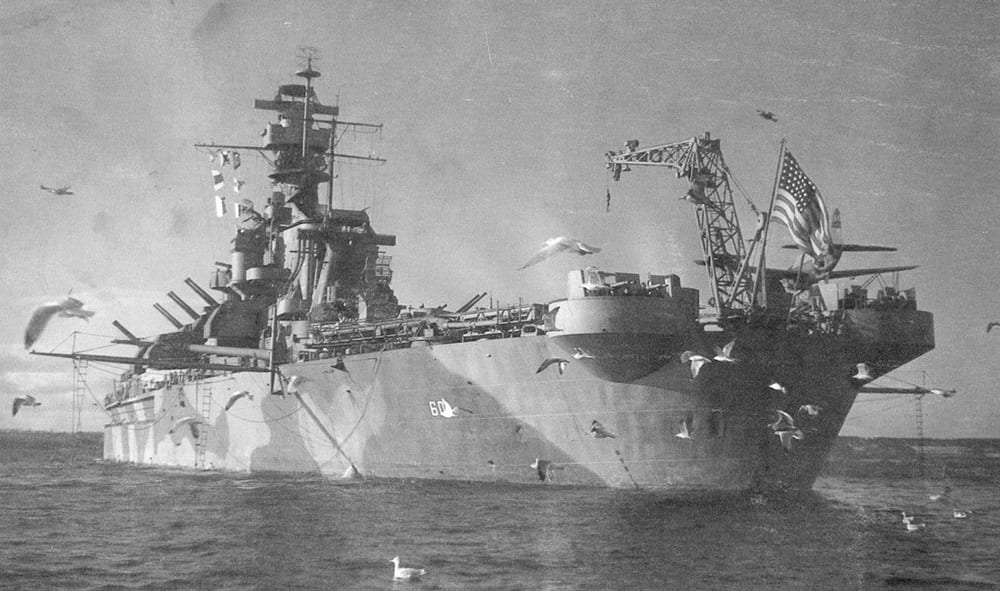History of the U.S. Navy battleship USS Alabama (BB-60) including information about asbestos exposure for workers.

The USS Alabama (BB-60) asbestos exposure history reflects a dangerous reality faced by U.S. Navy veterans during World War II. As a South Dakota-class battleship active in both the Atlantic and Pacific theaters, the ship carried extensive asbestos materials in machinery spaces, insulation, fireproofing, and pipe systems—putting countless service members at risk.
History of the USS Alabama (BB-60)
Nicknamed “Lucky A,” the USS Alabama (BB-60) was ordered in 1939 and constructed at Norfolk Navy Yard. Her keel was laid on February 1, 1940. She launched on February 16, 1942, and was officially commissioned later that year on August 16, under the command of Captain George B. Wilson.
Following her shakedown in Chesapeake Bay and operational training in Casco Bay, Maine, the USS Alabama returned to Norfolk in early 1943 for retrofitting and supply replenishment. Soon after, she joined Task Group 22.2 and resumed tactical drills in Casco Bay.
Combat Deployments and Wartime Missions
In 1943, the USS Alabama joined the British Home Fleet. Alongside the USS South Dakota and several destroyers, she protected Arctic convoys and participated in Operation Governor, an unsuccessful attempt to draw the German battleship Tirpitz out of hiding.
By August 1943, the Alabama returned to the U.S. for repairs before sailing for the Pacific via the Panama Canal. She trained at Efate in the New Hebrides and took part in Operation Galvanic, screening carriers in assaults on the Gilbert Islands, including Tarawa, Betio, and Makin.
On December 8, 1943, the USS Alabama led one of the earliest naval bombardments in the Pacific Theater, firing more than 500 rounds on Nauru Island, a phosphate hub under Japanese control.
1944: Operations in the Marshall and Mariana Islands
In early 1944, the USS Alabama supported Operation Flintlock, targeting the Marshall Islands. She fired 330 rounds at Japanese fortifications around Kwajalein Atoll, then joined an attack on Truk Lagoon, destroying key enemy ships and infrastructure.
She later moved to the Mariana Islands, backing strikes on Tinian, Saipan, and Guam. A tragic onboard accident occurred when one of her gun turrets misfired into another, killing five crew members and injuring 11 more.
USS Alabama BB-60 Asbestos Exposure Areas
Like many battleships of its era, the USS Alabama was built using large amounts of asbestos. Exposure typically occurred in:
- Engine and boiler rooms (insulation, gaskets, and valves)
- Turret systems (high-heat fireproofing materials)
- Lagging around pipes in the hull and crew quarters
- Mess halls and sleeping areas (through contamination from other areas)
- Maintenance areas where asbestos-laden parts were frequently handled
Sailors involved in repairs, engineering, gunnery, and fire control were especially vulnerable. Even those in non-technical roles could be exposed indirectly via contaminated air or uniforms.
Who Was at Risk on the USS Alabama?
Crew members most at risk included:
- Boilermen and Machinist’s Mates
- Electrician’s Mates and Gunner’s Mates
- Damage Controlmen
- Shipfitters and Pipefitters
- Welders and Insulators
Veterans who served aboard the USS Alabama and later developed mesothelioma or other asbestos-related illnesses may be eligible for legal and financial assistance.
Legal Help for Navy Veterans Exposed to Asbestos
If you or a loved one served aboard the USS Alabama BB-60 and developed mesothelioma, you’re not alone. Many Navy veterans have filed successful asbestos exposure claims. Our firm helps victims:
- Navigate VA claims and benefits
- Pursue trust fund compensation
- File lawsuits against negligent manufacturers
To explore your options, speak with experienced mesothelioma attorneys who understand Navy asbestos exposure.
More Asbestos-Contaminated Battleships
The USS Alabama wasn’t the only battleship affected. Others include:
Explore the full list of U.S. Navy asbestos exposure ships to find more service records and risk details.
FAQs about USS Alabama BB-60 Asbestos Exposure
What was the main source of asbestos on the USS Alabama?
Primarily, asbestos was used in insulation, engine rooms, piping systems, and fireproofing materials throughout the ship.
Which veterans were most at risk of exposure?
Anyone working in engineering, machinery spaces, or ship maintenance had the highest risk of exposure.
Can family members of USS Alabama veterans file claims?
Yes. If a Navy veteran passed away from mesothelioma, their spouse or dependents may be eligible for compensation.
Is there asbestos risk for visitors to the USS Alabama museum today?
No. Modern preservation standards have removed or encapsulated any hazardous materials aboard the museum ship in Mobile, Alabama.
What should a veteran do after a mesothelioma diagnosis?
Contact a qualified mesothelioma law firm immediately to discuss compensation and VA benefit options.
How long does a mesothelioma claim take for Navy veterans?
Timelines vary, but with legal support, many claims are resolved within 6–18 months.
If you were searching for asbestos job sites in Alabama, or need information about other battleships with asbestos exposure, explore our full database of U.S. Navy ships.
